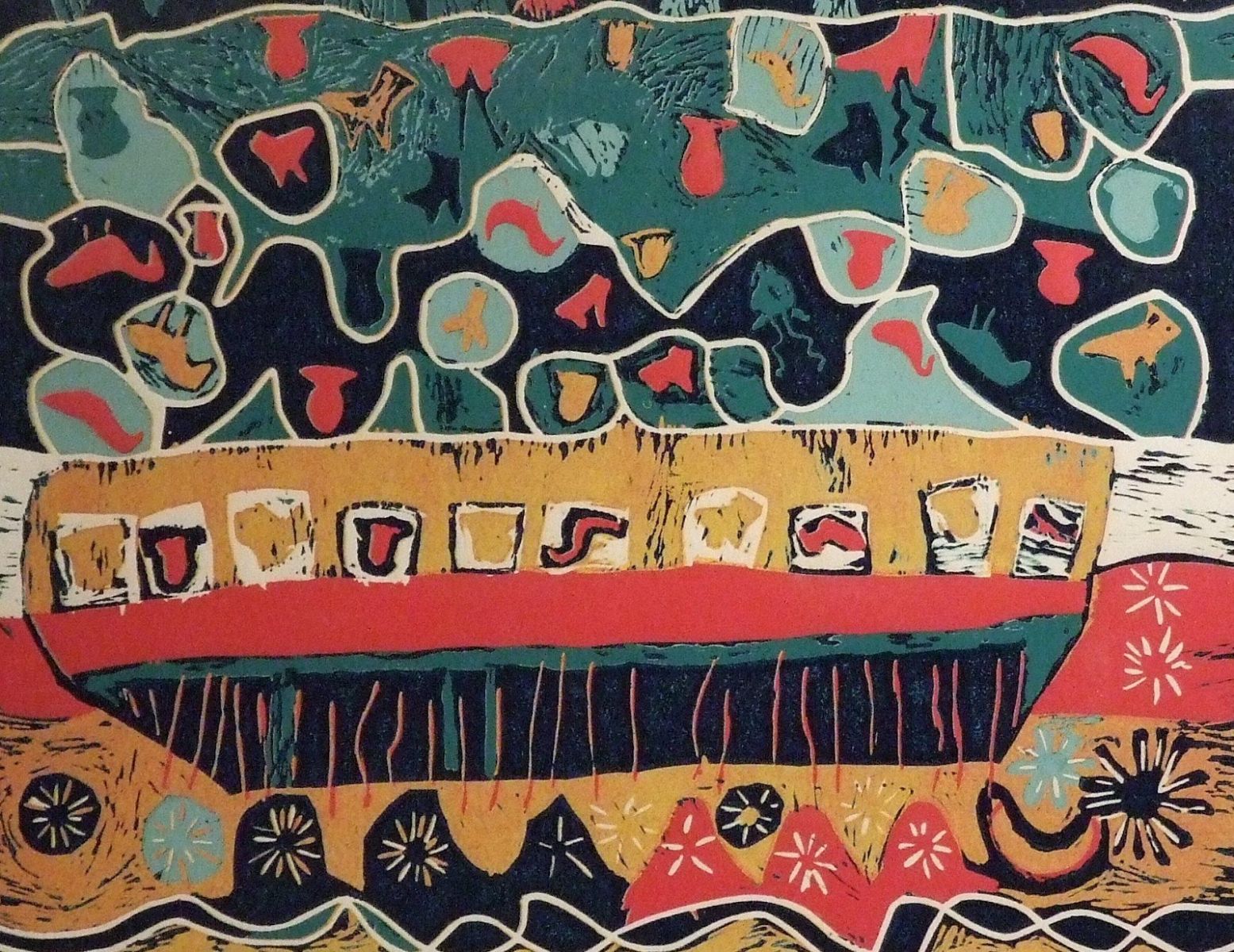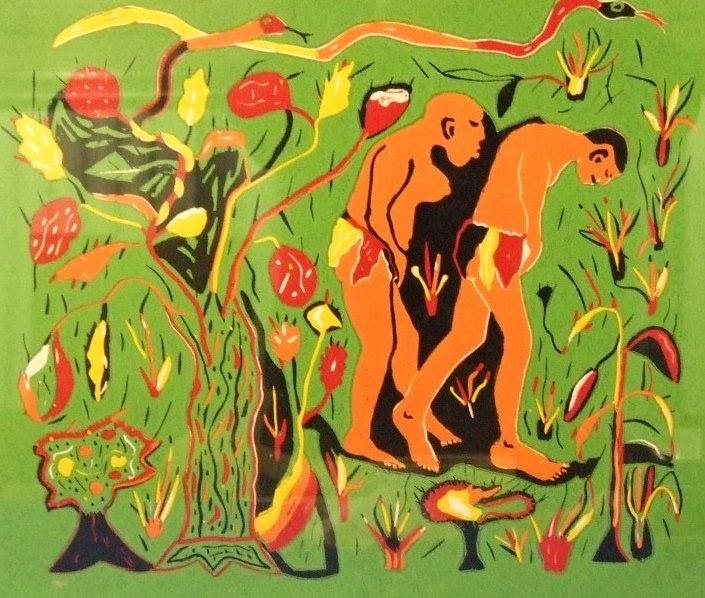Noah - The San in Botswana
The San: Noah’s Ark

Children of the Veld
by Huub Lems
Rock paintings are possibly the oldest art form that has been preserved for posterity. We can find them on all continents. They are often dated in pre-history to ca. 10.000 years ago. The original inhabitants of the earth recorded them on rocks. Sometimes only carved, but more often applied on the rock using colourful pigments. The drawings are often designated as primitive and usually depict animals from the milieu of the inhabitants, especially those animals that were hunted.
Officially the Bushmen from Botswana are called ‘San.’ They call themselves ‘Children of the Veld.’ But most of all they like to be called ‘Nakwe’: people with a red skin, different from all black and white people living around them. And yet, there is only one name by which they are known in the whole world and that is ‘Bushmen of the Kalahari.’ When they were first described by an expedition sent out by Jan van Riebeeck in 1655, people described them as little people, very wild, without houses, cattle, or any other possessions, dressed in skins. Since then this is how they have been seen. The only possessions they carried with them were hunting tools.

Deep in the Kalahari Desert approximately 50 Bushmen still live in the same way as they did for centuries. The women go into the veld to gather fruit, roots, and kindling for the fire. They take care of the children; the men go hunting. They make up the last group of people who still live in the way our forebears gave shape to their existence long ago. However, the developments in the unmanageable Kalahari Desert have continued at great speed in recent years. The Bushmen and women were forced to give way to diamonds and tourists and are herded together in so-called settlements where they now live. Their culture threatens to disappear and that is why it is so special that a small group of San people are portraying their way of life and Bible stories in their works of art. Of these, a beautiful series has been collected on the Dutch zendingserfgoed (Missionary Heritage) website.
In 1990 a group of 40 San people drove on an old truck from D’kar, a small village in the Kalahari Desert, to the holy hills of Tsodilo, the place where their god Naoea formed the world. Rock art from the forebears of the Bushmen can be found there. Inspired by these ancient rock drawings, they set out to make artworks of their own. One of the results is this painting of Noah’s Ark. The ark is in a central position with animals in and fish and birds above it rendered schematically in blocks, sometimes pictured upside down or at an angle.
The Missionary Heritage Foundation Netherlands (Zendingserfgoed.nl) wants to draw attention to this enthusiastic group of artists and their culture and habits. The works have been exhibited in Gaborone (Botswana), Cape Town (South Africa), Windhoek (Namibia) and later in Europe. Daily the San dream about their lost paradise and in the evening they talk about it around the fire. This is what they also capture in their paintings.
*******
1. Noah’s Ark
2. Adam and Eve Driven out of Paradise
For the complete series: click here
Stichting Zendingserfgoed (Missionary Heritage Foundation) aims to manage the collections belonging to the heritage of the Protestant missions in the Netherlands. These collections may consist of art objects, ethno-graphical items, gifts, exhibitions, films, slides, sound recordings, books and other archival objects. The management also includes the acquisition (whether as loan or not), the care, cataloguing, publication, and lending of parts of the collections. On the website you can find various works of art. After the Missie Zendingskalender was discontinued, a new Mission Heritage calendar is being published.
Huub Lems is President of the Foundation Zendingserfgoed.
ArtWay Visual Meditation February 6, 2022


